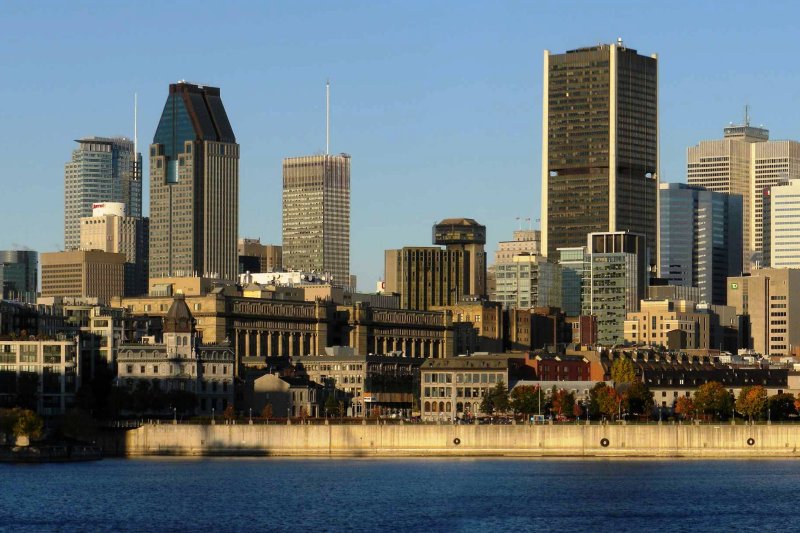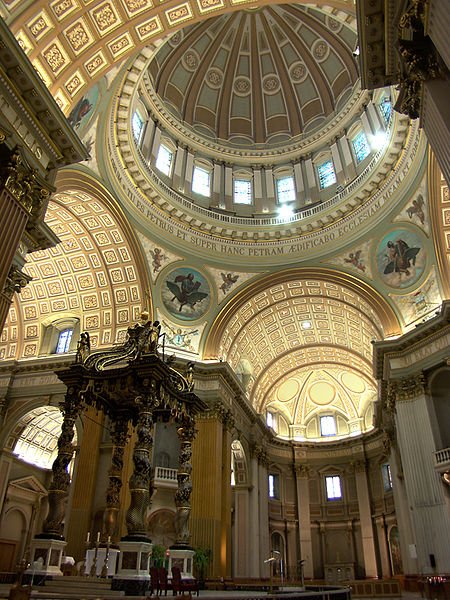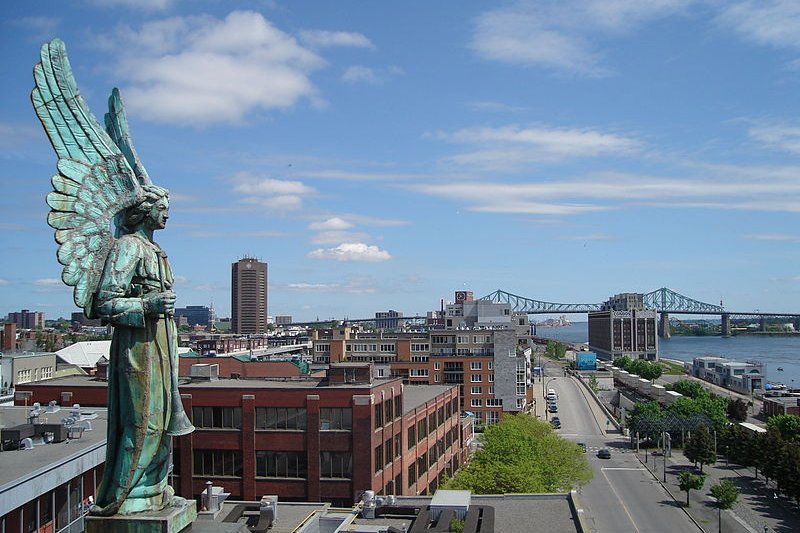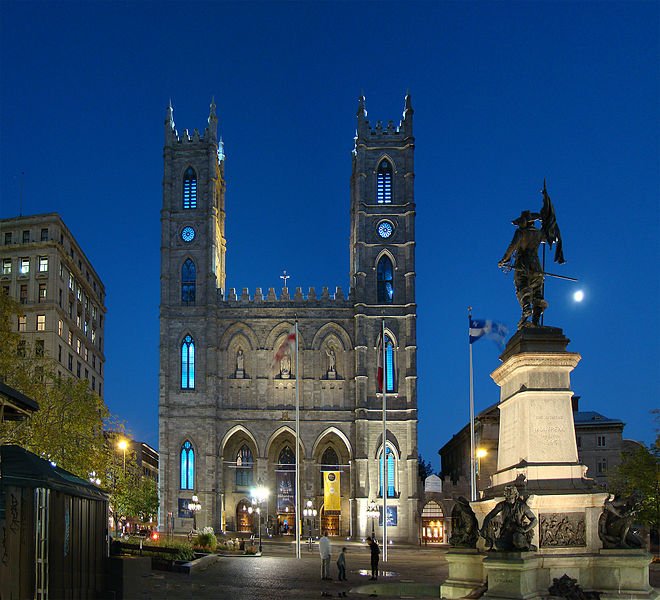 Montreal, Canada
Montreal, CanadaSource: https://commons.wikimedia.org/wiki/File:Canada_Montreal_Panorama.jpg
Author: G. Baranski

Montreal is the biggest city in Quebec, and the second biggest in Canada. Originally known as Ville-Marie, it was renamed after the triple-peaked hill in the heart of the city.
Montreal has a population of 1.6 million people within a metropolitan area of 3.6 million as of 2006. Until 1976, when it was surpassed by Toronto, Montreal was the biggest city in Canada. French is the official language in Montreal, as defined by the city's charter. It is the second largest city in the world behind Paris where French is the first language of its inhabitants, and the fourth largest in the world, behind Paris, Kinshasa and Abidjan, where French is the language of commerce.
The area around Montreal has been inhabited by indigenous peoples at least two thousand years before the arrival of the first European. The French explorer Jacques Cartier is believed to be the first to have arrived in the area around 1535. In 1611 another French explorer Samuel de Champlain established a fur trading post on the island of Montreal, called it La Place Royale.
 Cathedral-Basilica of Mary, Queen of the World, in Montreal, Canada
Cathedral-Basilica of Mary, Queen of the World, in Montreal, CanadaSource: https://commons.wikimedia.org/wiki/File:Montreal_MReine2_tango7174.jpg
Author: Tango7174

Montreal was made a city in 1832. Lachine Canal and Victoria Bridge were some of the 19th century infrastructure projects that helped Montreal establish itself as a major transportation hub. Montreal was the capital of the Province of Canada between 1844 to 1849, when it lost the status to the more centrally located Toronto.
The 1970's was a time of great changes in the social and political landscape of Montreal. It was a period when the French-speaking majority of Montreal became more concerned over the erosion of their culture and language to the dominance of the English-speaking minority within their city. The election of Parti Québécois that supports sovereign status for Quebec caused many people and businesses to pack up for other parts of Canada.
From the 1980's to the early 1990's Montreal trailed the other major cities of Canada in terms of economic growth. The climate has since improved somewhat. On 1 January 2002, the 27 surrounding municipalities on the Island of Montreal was merged with the city to formed a unified city of Montreal, to much opposition. After several referendums taken in June 2004, the City of Montreal was left with 15 municipalites as of 1 January, 2006.
 Steeple of Notre-Dame de Bon Secours Chapel, Montreal
Steeple of Notre-Dame de Bon Secours Chapel, MontrealSource: https://commons.wikimedia.org/wiki/File:Notredamebonsecours.JPG
Author: Alhutch

Travel to Montreal
By PlaneThe airport serving Montreal is the Pierre Elliott Trudeau International Airport (YUL). It is a hub for Air Canada, Air Transat and WestJet.
To get out of the airport, you can take the STM Airport Express Bus 747. The fare is $7 to reach downtown Montreal, and it allows you unlimited use of the STM bus and metro for the rest of the day.
You can also take the public bus No. 204 to the Dorval railway station in downtown Montreal. The fare is $2.75. You need to provide exact change - the drivers don't give change.
Travel within Montreal
During the summer months you can easily explore Montreal on foot. Places in downtown Montreal are ideal for sightseeing on foot. To get anywhere farther, you can take the metro or bus run by STM (Société de transport de Montréal). Single journey tickets cost $2.75, and can be bought in a pack of six for $13.25. If you are going to use the public transport a lot, then I suggest you get the tourist pass which allows for unlimited rides. They are available for one day ($7.00) and three days ($14.00). Finally, you can also buy the stored-value card, called OPUS, which you can refill when the stored amount drops low. Basilique Notre-Dame, Montreal
Basilique Notre-Dame, MontrealSource: https://commons.wikimedia.org/wiki/File:Montreal_NDame1_tango7174.jpg
Author: Tango7174

Places of Interest in Montreal
- Marché Bonsecours
Heritage building that has been everything from former Parliament of Canada to vegetable market. - Château Ramezay
Former city council building of Montreal. - Chapelle Notre Dame-de-Bonsecours
Church for the sailors of Quebec. - Pointe-à-Callière Archeological Museum
Museum showcasing early ruins and water systems from the 17th century. - Basilique Notre-Dame
One of the most beautiful churches in North America. - Hôtel de Ville
Montreal City Hall, erected in 1872-78. - Vieux-Port
Montreal's harbor was one of the most important inland harbors in North America. - Sir George-Etienne Cartier National Historic Site
Two adjoining graystone houses belonging to Cartier, one of the most important political figures in 19th century Canada. - Musée Marc-Aurèle Fortin
Museum in an old warehouse exhibiting works by Québécois painter Fortin - Centre d'Histoire de Montréal
Museum chronicling the history of Montreal from pre-colonial times to modern age. - Chinatown
Formerly an enclave of Chinese immigrants, today most of the businesses in this precinct belongs to Vietnamese and Thai immigrants. - Plateau Mont-Royal
A neighborhood with bookshops, boutiques, bistros and sidewalk cafes. - Place des Arts
Centre for the performing arts in Montreal. - Musé d'Art Contemporain
The only museum in Canada exclusively dedicated to modern art. - Christ Church Cathedral
Seat of the Anglican bishop of Montreal. - McGill University
The oldest university in Canada. - McCord Museum of Canadian History
Museum of Canadian social history exhibiting everyday items such as the tools, weapons and jewelry of the Inuit people. - Musée des Beaux Arts
Museum housing the oldest and largest art collection in Quebec. - Underground City
Subterranean mall that opened with the Montreal métro. - Square Dorchester and Place du Canada
Open squares in downtown Montreal
 Latest updates on Penang Travel Tips
Latest updates on Penang Travel Tips

Copyright © 2003-2025 Timothy Tye. All Rights Reserved.

 Go Back
Go Back